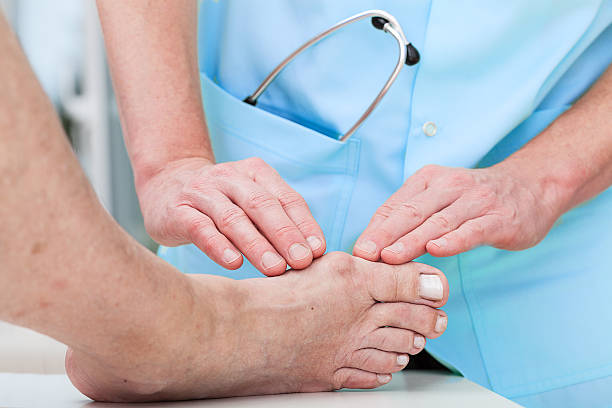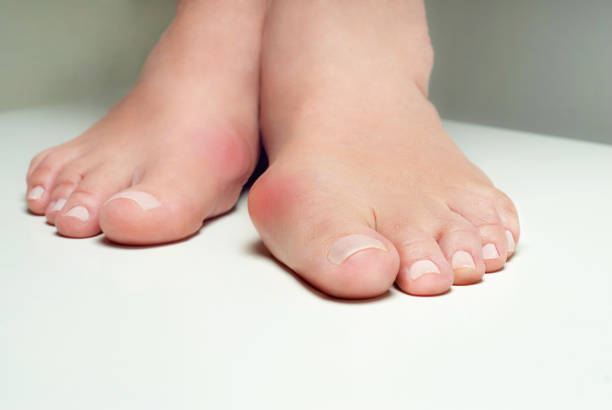Easing the Agony of Big Toe Pain – Finding Relief at Your Bunion Clinic
If your big toe hurts, you should see a doctor right away. They will examine the foot and toes, do X-rays, and may order other tests like a CT scan or MRI.
Adelaide Bunion Clinic may recommend nonsurgical treatments such as shoe inserts, splinting the big toe at night, or massage and other physical therapy practices that can break up soft-tissue adhesions.

What is a Bunion?
A bunion is a bony bump on the joint at the base of your big toe. It forms when the bones in your foot shift and crowd the toes, with your big toe leaning into or diving over the little toes. This deformity, also called hallux valgus or big toe bunion, can be painful, but it isn’t necessarily serious. You should get it checked out if it gets inflamed or if you can’t walk normally.
Bunions develop slowly over years, as the bones change their position and certain ligaments stretch or tighten. They are more common in women, perhaps because of the way pointed-toed shoes, especially high heels, squeeze their toes. They may also be hereditary, or a result of foot problems, like flat feet or low arches, or a neuromuscular condition, such as Charcot-Marie-Tooth disease or polio.
Doctor diagnose bunions based on a detailed examination of your foot and toes, and X-rays or a CT scan. We might also order blood tests to see if another condition is contributing to your bunion. If nonsurgical treatments aren’t helping, we recommend surgery. During a procedure called a bunionectomy, we remove the boney bump and realign the toe joint. We use local anesthesia, sedation or general anesthesia. A type of regional anesthesia called a popliteal block is also available for lower leg surgeries, including those to treat bunions. It works for a longer time than an ankle block and numbs more of the leg and foot, from just below the knee to your feet.
Nonsurgical Treatments
Often, bunions develop gradually, increasing in size and pain over weeks or months until they reach the point where they are disruptive to daily activities. At this point, there are several treatment options available that can reduce discomfort and slow progression of the bunion.
One of the most important nonsurgical treatment options is to wear shoes with enough room for your toes, especially in the area of the big toe. Shoes that are too narrow in this area put excessive pressure on the big toe and can cause the bony bump to swell. Toe spacers can help alleviate this pressure and reduce the risk of irritation. Gel or moleskin pads can also minimize pain from the rubbing of the bunion against the inside of your shoe.
Another nonsurgical option is to use a cold or hot compress on the affected area of your foot. This can increase blood flow to the area, decreasing swelling and inflammation. Over-the-counter nonsteroidal anti-inflammatory medications such as acetaminophen and ibuprofen can decrease pain and swelling.
Lastly, exercise, good diet, and weight management can all decrease bunion pain by reducing the amount of pressure your feet endure throughout the day. This can prevent the big toe pain Adelaide from becoming misaligned, causing pain and swelling. Also, by exercising and stretching your feet regularly, you can strengthen your muscles and improve overall foot function.

Surgery
When the pain of a bunion interferes with daily activities and isn’t relieved by changing shoes, applying pressure to the area with moleskin or gel pads and taking over-the-counter anti-inflammatory medications, it’s time to see a doctor. They may recommend resting the foot as much as possible, doing exercises that reduce pain and squeezing out excess fluid with a whirlpool or ultrasound treatment.
When conservative measures fail, a foot and ankle surgeon can perform surgery to reduce the bunion deformity and restore the big toe joint’s alignment (hallux valgus). Surgery is a permanent solution for bunions that don’t respond to other treatments.
Before surgery, your doctor will ask you about your health, lifestyle and activity level so they can choose the best procedure for you. This can include osteotomy, which involves making small cuts in your toe joint and straightening the bone; arthrodesis, which fuses the joint together; or exostectomy, which removes the bump but does not realign the joint.
You will most likely need to undergo a period of no weight bearing as the bones heal, usually for two weeks. Depending on the procedure you have, your doctor may require you to wear a cast or a boot with a special insert that supports the foot and holds the toe in position. During recovery, your physical therapist will teach you specific foot exercises, such as picking up marbles, to help restore motion to the toe.
Orthotics
Orthotics are specialized devices designed to help support, align, prevent, and improve the function of movable body parts. A custom-made orthotic for bunions helps reduce the pain and other symptoms of this deformity by decreasing the stress on the big toe joint. This is important because this stress is what causes the bunion to progress and become symptomatic.
Usually, bunions develop on the metatarsophalangeal (MTP) joint at the base of your big toe, also called your hallux. Over time, this joint becomes misaligned and forces your big toe against other toes. This creates a protrusion on the side of your foot that looks like a bump. Bunions can also form on the little toe joint, forming small bony bumps on the outside of your foot called bunionettes.
While simple at-home treatments such as icing the big toe and wearing shoes with wide toe boxes can ease bunions, they do not treat the root of the problem or prevent them from recurring. For this reason, surgery is recommended for advanced cases of bunions that interfere with your daily life.
Bunion removal surgery involves cutting out the bunion, realigning the toe, and sometimes fusing the joints. This procedure is a safe, effective treatment option for severe bunion pain when nonsurgical treatments fail to provide adequate relief. Your podiatrist will recommend the best treatment options for your unique case.




